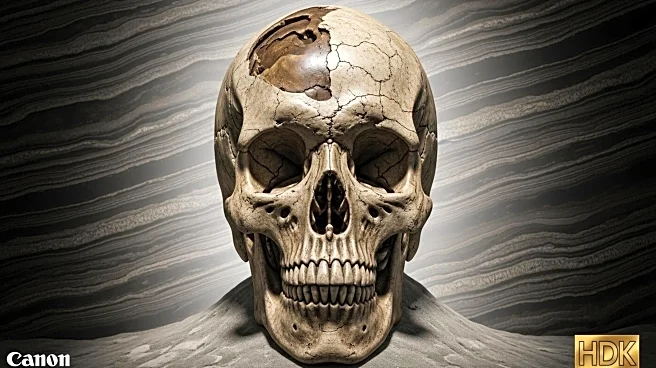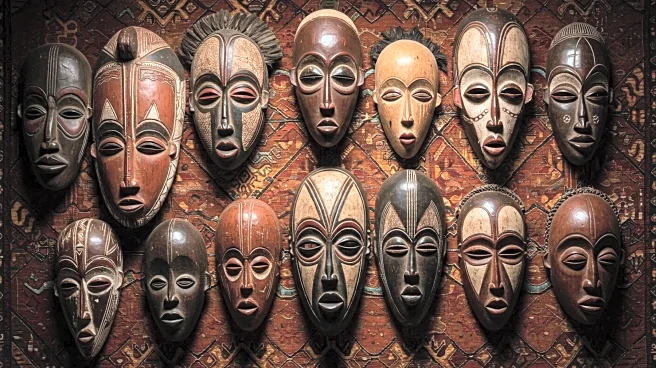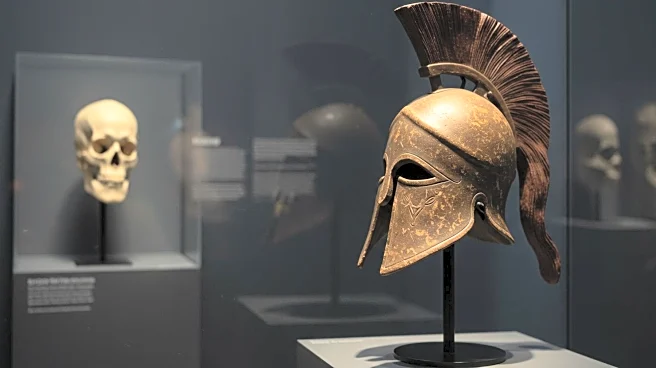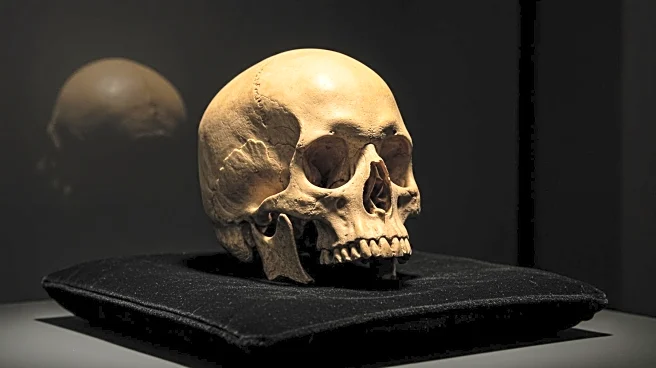What's Happening?
A team of Chinese paleoanthropologists has uncovered 21 fossilized teeth in the Hualongdong cave in southeastern China, dating back approximately 300,000 years. These remains exhibit a unique blend of archaic and modern human features, suggesting either an unknown human lineage or a complex case of ancient interbreeding. The Hualongdong site, first excavated in 2006, has previously yielded fossilized remains of at least 16 individuals from the Middle Pleistocene era. The latest analysis focuses on the teeth, which present a combination of characteristics that defy existing evolutionary models. The third molars are notably small, a trait associated with modern humans, while the roots are thick and strong, resembling those of Homo erectus. This hybrid anatomy is unprecedented in the fossil record, indicating that evolution may have progressed at different rates in various parts of the body.
Why It's Important?
The discovery at Hualongdong challenges traditional narratives of human evolution, which have predominantly focused on Africa and Europe. The findings suggest that Asia played a significant role in the evolutionary diversity of human species, with multiple lineages coexisting and evolving in parallel. This could reshape our understanding of human origins and the complexity of evolutionary processes. The study proposes three scenarios to explain the traits: a new human lineage, hybridization with Homo erectus, or selective pressure leading to genetic drift. Each scenario has implications for how we perceive human evolution in Asia, highlighting the continent as a hotspot for evolutionary diversity.
What's Next?
Further genomic evidence is needed to confirm any of the proposed scenarios. The study emphasizes that Hualongdong humans cannot be easily categorized using current evolutionary models. Future research may focus on obtaining genetic material from the fossils to better understand their lineage and evolutionary significance. This could lead to a reevaluation of human evolutionary history, particularly in Asia, and prompt new investigations into other sites with similar findings.
Beyond the Headlines
The discovery underscores the complexity of human evolution, suggesting a 'tangled bush' rather than a simplistic tree. It highlights the potential for overlooked evolutionary diversity in Asia, challenging the notion of a linear progression of human species. This could have broader implications for understanding human adaptability and the factors influencing evolutionary change.












